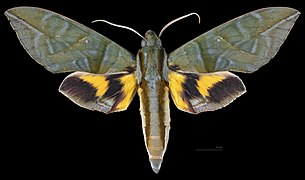
Eumorpha is a genus of moths in the family Sphingidae. The genus is mostly found in North and South America.
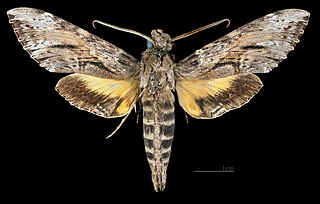
Isognathus rimosa, the rimosus sphinx, is a moth of the family Sphingidae. The species was first described by Augustus Radcliffe Grote in 1865.

Aellopos ceculus is a moth of the family Sphingidae.
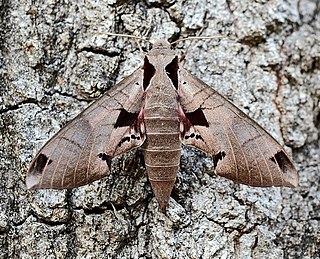
Eumorpha achemon, the Achemon sphinx, is a moth of the family Sphingidae. The species was first described by Dru Drury in 1773.

Eumorpha capronnieri is a moth of the family Sphingidae first described by Jean Baptiste Boisduval in 1875.

Eumorpha elisa is a moth of the family Sphingidae.
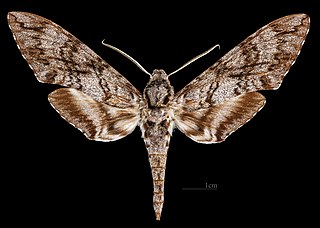
Manduca corumbensis is a moth of the family Sphingidae.

Manduca dalica is a moth of the family Sphingidae.

Manduca diffissa is a moth of the family Sphingidae first described by Arthur Gardiner Butler in 1871. It is known from most of South America.

Oryba achemenides is a moth of the family Sphingidae.

Isognathus australis is a moth of the family Sphingidae.

Isognathus scyron is a moth of the family Sphingidae.

Eumorpha analis is a moth of the family Sphingidae.

Eumorpha cissi is a moth of the family Sphingidae.

Eumorpha drucei is a moth of the family Sphingidae. It is known from Ecuador.

Eumorpha obliquus is a moth of the family Sphingidae. It is found from Belize, Guatemala, Nicaragua and Costa Rica south to Bolivia. It is also present in Brazil and Guadeloupe.

Eumorpha translineatus is a moth of the family Sphingidae.
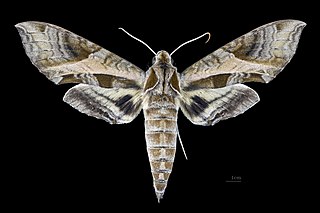
Eumorpha megaeacus is a moth of the family Sphingidae.
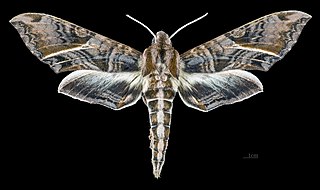
Eumorpha neuburgeri is a moth of the family Sphingidae. It is known from Argentina and Bolivia.

Eumorpha strenua is a moth of the family Sphingidae. It is known from Haiti, Cuba and the Dominican Republic.

